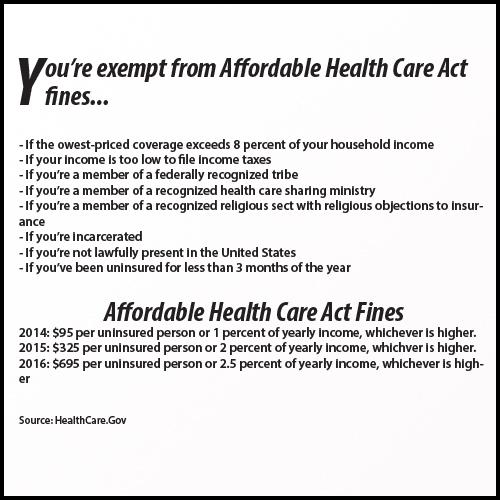Affordable Care Act offers health care options on a budget
Nicknamed “Obamacare,” the new legislation looks to overhaul the current system to provide health care to a larger percentage of Americans
Three and a half years after President Barack Obama signed the Patient Protection and Affordable Care Act into law on March 23, 2010, the U.S. has taken its first large step in a massive health care reform.
This legislation, known as the Affordable Care Act, introduced open enrollment for the Health Insurance Marketplace on Oct. 1.
The Marketplace is the first phase in the ACA’s goal of providing cheaper health care to all American citizens. It serves as a place where people can research, compare and apply for private health care plan options.
Each individual state has its own marketplace. For California, applicants will apply through a new marketplace titled Covered California.
“We’ve started strong,” said Executive Director Peter V. Lee of Covered California, in a press release. “The amount of interest and number of applications we’ve received in the first week underscores the demand among Californians for quality, affordable health care.”
Covered California divides the state into different pricing regions that offer area-specific insurance plans.
For the Sacramento region, plans are available through four different major insurance companies: Anthem Blue Cross of California, Blue Shield of California, Kaiser Permanente and Western Health Advantage.
“I think it’s a great thing,” said Cynthia Mesa, 19, an international relations major. “I always looked at other countries and thought ‘wow I wish we had that here.’ I don’t have health care right now, so I think it’s awesome that now I can take care of myself.”
However, not every company working with the exchange is offering access to their entire network.
Sean Barry, Spokesperson for Blue Shield of California, noted Blue Shield offers a “high value network to customers on the exchange that includes 50 percent of the participating doctors in our full network and 75 percent of hospitals.”
“The reason we do not offer 100 percent is in order to offer a competitive premium in much of the state,” said Barry. “Our customers under Covered California are not going to be inhibited by any cages as compared to our current network.”
Different companies’ plans may offer different benefits depending on the individual’s needs, yet all plans are required to include a set of what are deemed essential health benefits.
Some of the services under these essential health benefits include emergency care and hospitalization, maternity and newborn care and prescription drugs.
Although Oct. 1 marked the beginning of open enrollment, health coverage from the plans will not begin until January 1, 2014.
By then, Americans are expected to have signed up for a health insurance plan to avoid paying a tax fine.
This fine will increase by a large amount over a three-year period, according to Covered California’s website.
This also does not include fines for having uninsured children or an uninsured family.
“It’s a good idea but it does have its flaws though,” said Karl Karason, a 26-year-old telecommunications major. “It’s forcing people to take health care even though they can’t afford it and by the end of tax season if they don’t have health care there will be more taxes. [This] shows it’s a desperation to push something on a person regardless of if they’re with it or not.”
The open enrollment period ends March 31, 2014.
If an individual was unable to acquire an insurance plan by that point, they will have to wait until the next open enrollment period in order to sign up for a Marketplace plan.
With the implementation of the ACA, supporters hope to drastically reduce or completely eradicate the amount of uninsured Americans.
In 2010, 50 million Americans were without health insurance, according to the U.S. Department of Health and Human Services website. This equates to 16 percent of the entire U.S. population at the time.
The number of uninsured citizens decreased in 2011 by about 1.34 million as a result of the ACA, allowing young adults to remain on their parents’ insurance plans until age 26.
Early numbers show that the ACA is helping to lessen the amount of uninsured.
In the first two weeks of availability, consumers in California made over 100,000 phone calls to the exchange and over 1.5 million people visited the webpage, according to a press release from Covered California.
Nearly 44,000 Californians applied in the first week alone and nearly two thirds of those were determined to be eligible for coverage, according to the press release.
“It’s just the beginning, but these numbers are truly exciting and encouraging,” said Lee, the executive director of Covered California, adding that he remains optimistic that the Affordable Care Act will not only help Californians but all uninsured around the nation who are seeking healthcare.
While it was originally thought the number of uninsured would plummet when the ACA’s insurance policies took effect, this may not be the case. The number of Americans that will remain uninsured by 2022 is still projected to be 30 million, according to a study conducted by the Congressional Budget Office.
A program this large comes with pressure.
“It’s the largest legislation to ever hit America,” said Chris Gardener, 35, a theology major. “We can’t get this wrong.”

